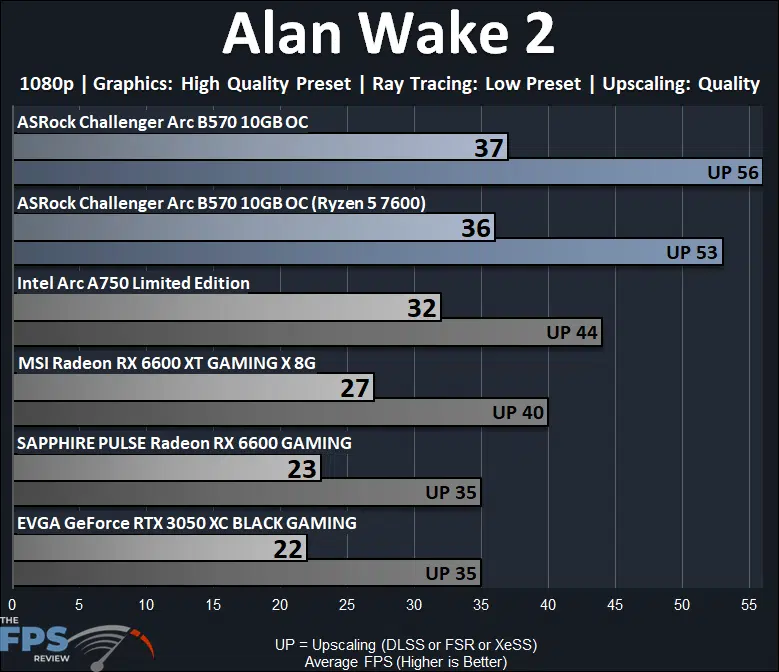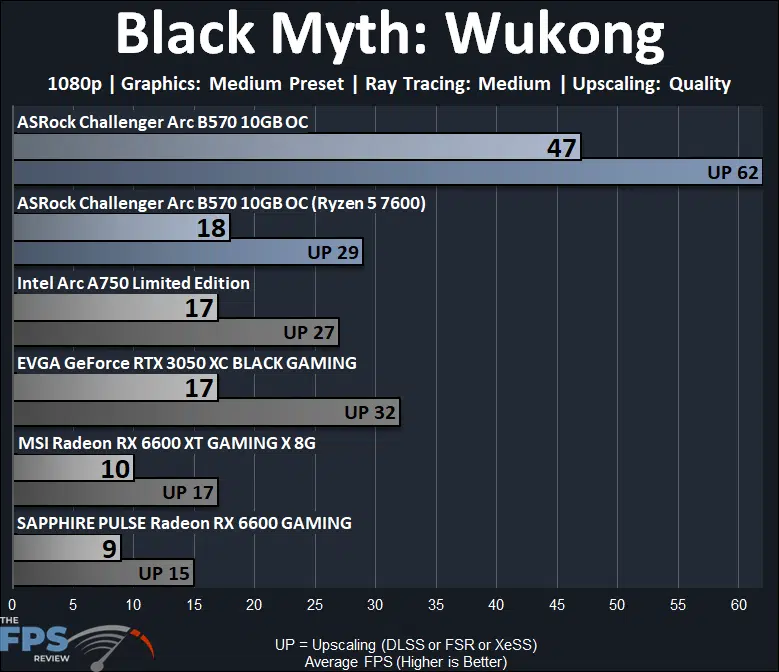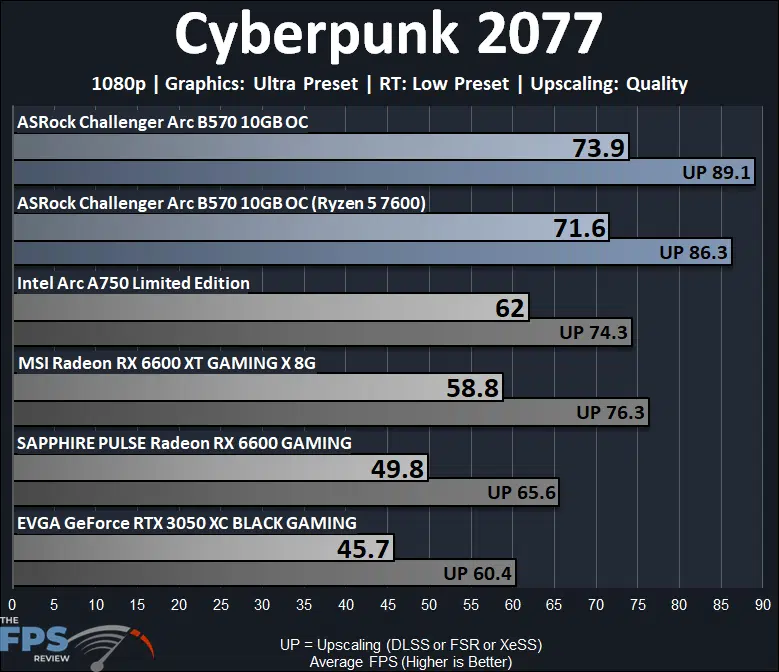Gameplay Performance with Ray Tracing
On this page, we are going to focus on the 1080p Ray Tracing gameplay performance of the ASRock Challenger Arc B570 10GB OC video card. We will include upscaling utilizing XeSS, DLSS, and FSR on the appropriate video cards (XeSS for Intel, FSR for AMD, and DLSS for NVIDIA). For the comparison cards, we have chosen a series of video cards that sit in the same price range as the video card being reviewed, thus comparing video cards that are segmented in the same price range, this way you can see what an upgrade to the Intel Arc A750 in this price segment will bring over previous cards, as an upgrade option.
Alan Wake 2

In Alan Wake 2, we are running at 1080p and we have enabled the “Low” Ray Tracing preset. Let’s face it, cards in this price range shouldn’t be expected to accelerate Ray Tracing well, but we are doing this purely to see how the RT performance compares, and if it has improved from the previous generation. Here we can see that yes, it has improved, the ASRock Challenger Arc B570 10GB OC is 16% faster than the Intel Arc A750 using Ray Tracing. What’s even more, is that the ASRock Challenger Arc B570 10GB OC is actually playable with Low Ray Tracing when you also enable FSR Upscaling in this game, and the A750 was not. The other cards are severely lacking in Ray Tracing performance, the ASRock Challenger Arc B570 10GB OC really is the ‘fastest’ at it here, academically speaking.
Black Myth: Wukong

In Black Myth: Wukong, we have set the game to 1080p, lowered the game graphics setting to “Medium” and also used the “Medium” Ray Tracing setting. This game is not playable without Upscaling, but there are some interesting things to note here. Firstly, there is a large performance difference between using the AMD Ryzen 7 9800X3D or AMD Ryzen 5 7600 CPUs when Ray Tracing is enabled in this game on the ASRock Challenger Arc B570 10GB OC. With the Ryzen 5 7600, the Intel Arc B570 loses a whopping 62% performance! It drops to the performance levels of the previous generation Intel Arc A750. Ouch.
With the Ryzen 7 9800X3D, the ASRock Challenger Arc B570 10GB OC is much faster than the Intel Arc A750 at 161% faster! The Intel Arc A750 uses the AMD Ryzen 7 9800X3D CPU as well, so nothing should be holding it back here, but wow, that really shows that Intel Arc B570 can potentially have huge Ray Tracing improvements, given a CPU that alleviates the obvious CPU overhead it currently suffers from.
Cyberpunk 2077

In Cyberpunk 2077, we are running at 1080p and have enabled the “Low” Ray Tracing preset in the game. Surprisingly, the ASRock Challenger Arc B570 10GB OC is very playable at 1080p with Low Ray Tracing at over 70FPS, and this time on both CPUs. Though there is about a 3% difference between them. Otherwise, the Intel Arc A750 doesn’t do as badly in this game, the ASRock Challenger Arc B570 10GB OC is 19% faster than the Intel Arc A750. It’s also faster than the other cards and allows a playable experience without having to use Upscaling with Ray Tracing.
